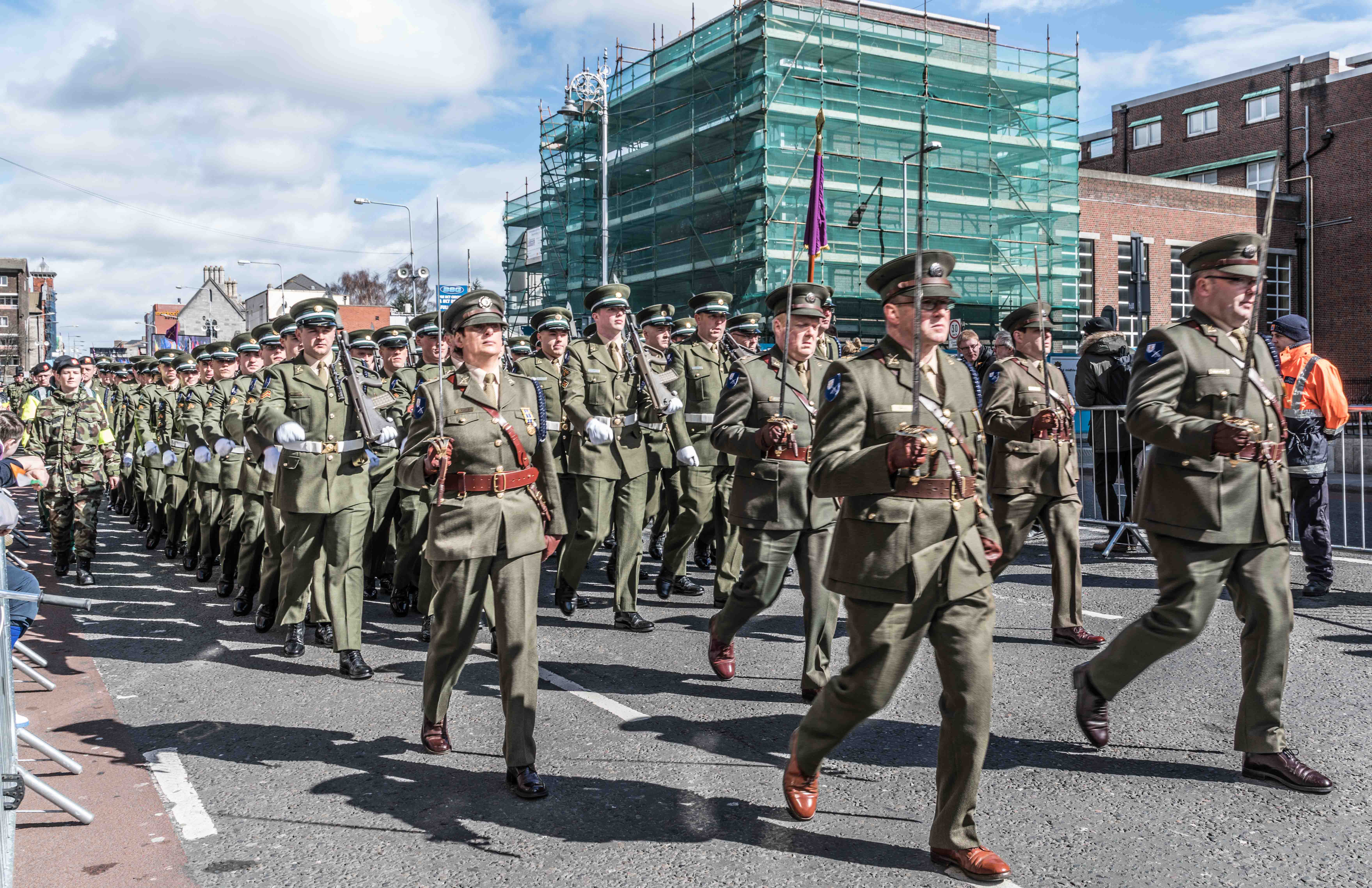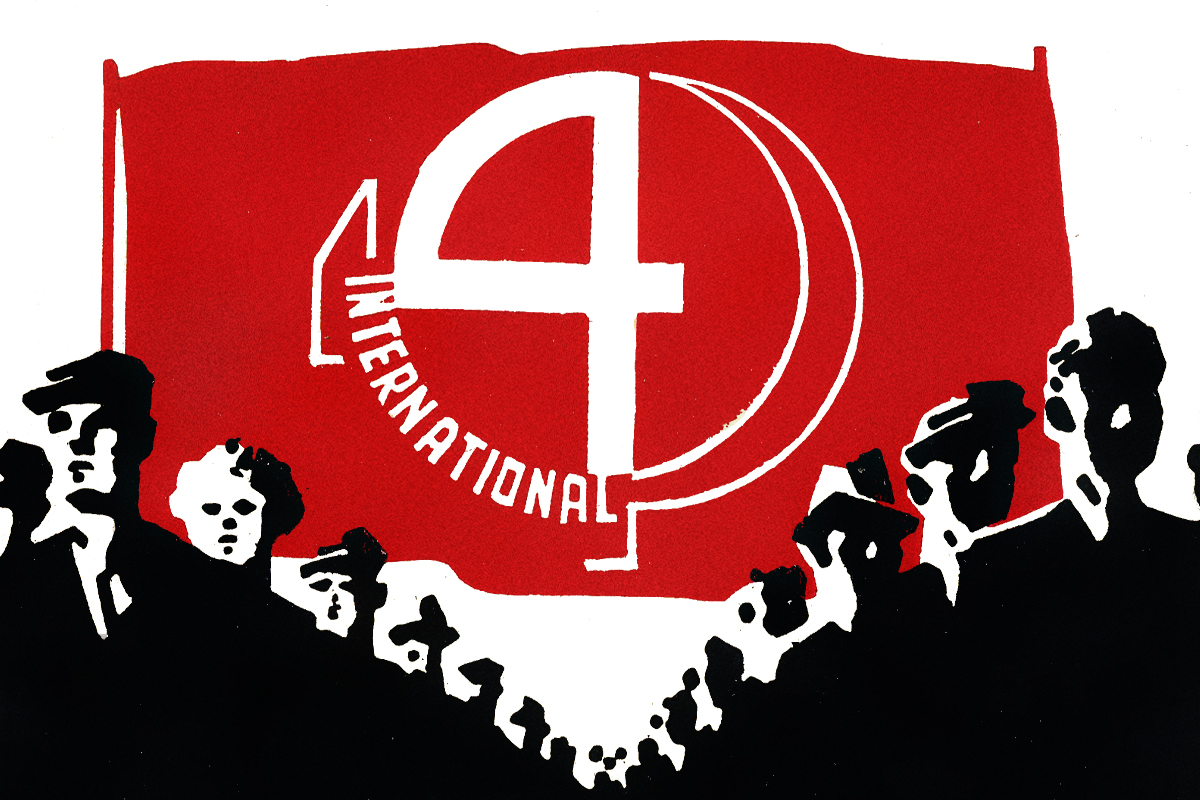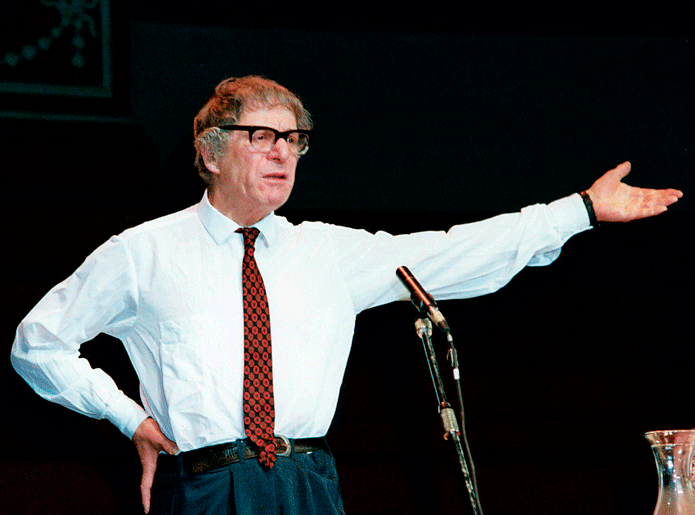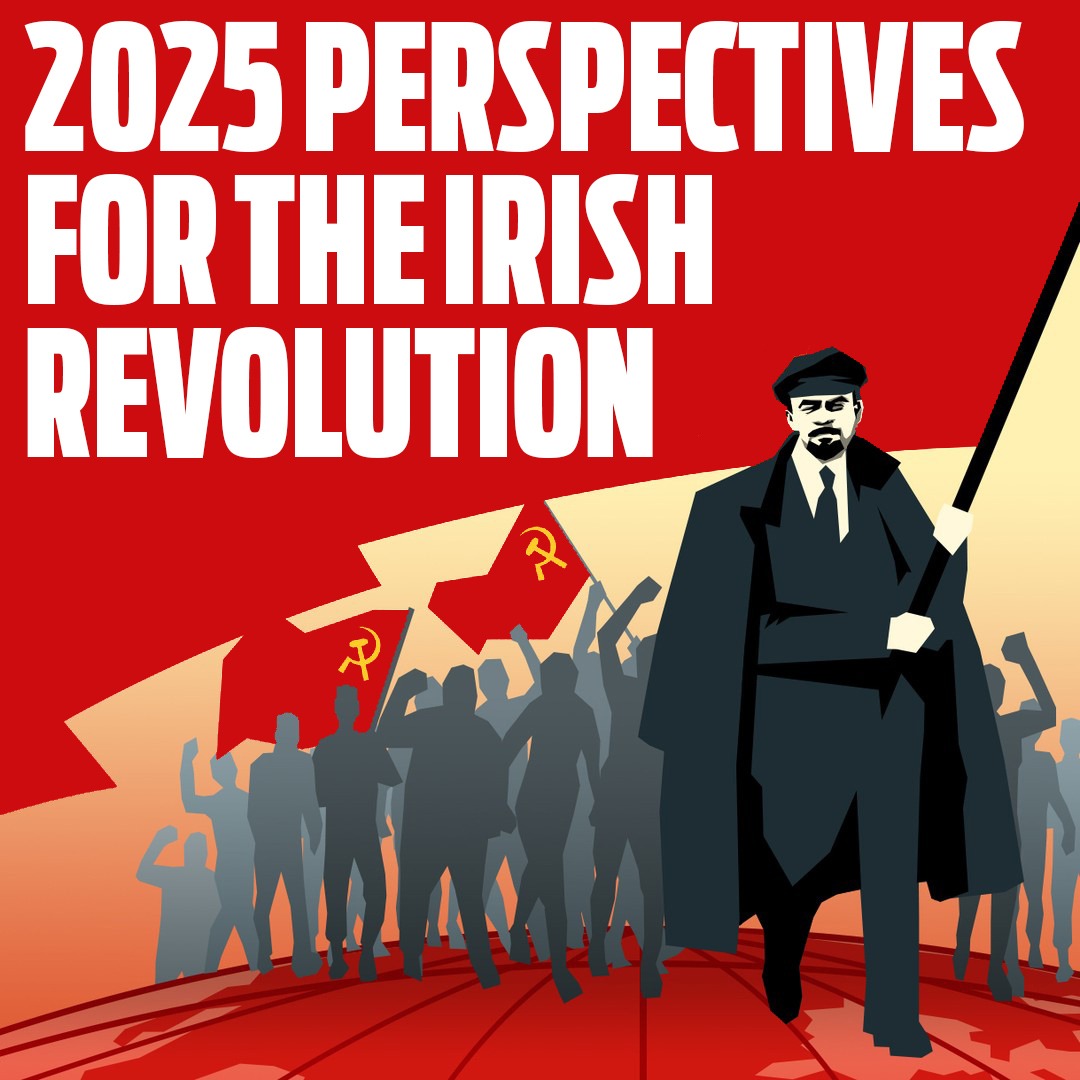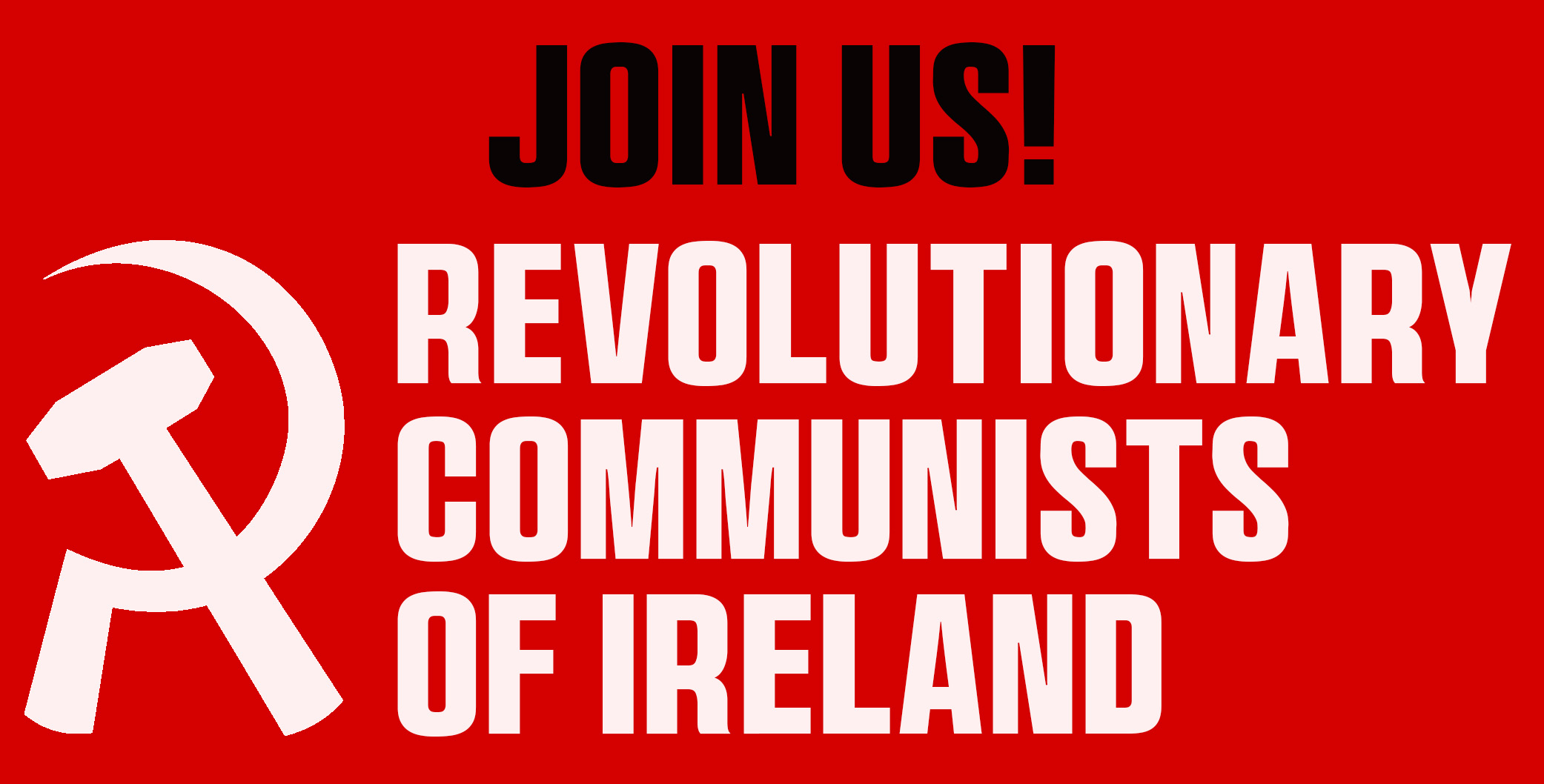On Sunday an official state ceremony was held in Dublin to commemorate the 100th anniversary of the 1916 Easter Rising. The officials present, including the men of the Church, represent a class that did not support the Rising in 1916, but who now wish to present themselves as heirs to that heroic struggle. Here Alan Woods exposes the utter hypocrisy of these people and recalls what the Rising was really about.
“The cause of labour is the cause of Ireland, the cause of Ireland is the cause of labour. They cannot be dissevered. Ireland seeks freedom. Labour seeks that an Ireland free should be sole mistress of her own destiny, supreme owner of all material things within and upon her soil. Labour seeks to make the free Irish nation the guardian of interests of the people of Ireland, and to secure that end would vest in that free Irish nation all property rights as against the claims of the individual, with the end in view that the individual may be enriched by the nation, and not by the spoiling of his fellows (…) Is it not well and fitting that we of the working class should fight for the freedom of the nation from foreign rule, as the first requisite for the free development of the national powers needed for our class? It is so fitting.” (James Connolly, Labour and Easter Week, p175)
Last Sunday in Dublin a ceremony was held as the culmination of a series of events organised by the Irish government to celebrate the hundredth anniversary of the Easter Rising. Hundreds of thousands of people lined the streets of the Irish capital to witness the grand finale. The soldiers paraded. The bands played Reveille and the Irish national anthem. Six Aer Corps aircraft flew above the capital’s main thoroughfare billowing smoke in the colours of the national flag. Tears were shed. The leaders made speeches. The crowds applauded. It was all very impressive.
The chief impresario and ringmaster of the show was Acting Taoiseach (Prime Minister) Enda Kenny. He said it was “important that we bear witness this centenary year to all those who gave their lives during Easter 1916”.A number of former Irish presidents and prime ministers were special guests at the ceremony. The Great and Good of the Emerald Isle were all there, dressed in their finery with the solemn faces one usually associates with a good funeral.
Among the assembled dignitaries one noticed a well-known face. Alongside the well-dressed ladies and gentlemen of the Irish ruling class Northern Ireland’s Deputy First Minister Martin McGuinness stood respectfully to attention. The Deputy First Minister said it was “a very special day”. In a way I suppose that was true.
It was very special that the representatives of that class that condemned the Easter Rising and abhorred everything it stood for could bring themselves to stand before the people of Ireland and pretend to praise it – one hundred years after it was all over.
It was very special that the men in black cassocks who railed against the rebels and poured curses on their heads, saying that the Easter Rising was against God, could now raise their pious hands to Heaven and offer belated prayers for their souls.
It was very special that the same Irish capitalists who hated everything that James Connolly stood for could now talk about a “new Ireland” based on the sacred principles of justice and freedom.
It was very special that those same bourgeois politicians who have been slashing the living standards of the Irish people to the bone, slavishly carrying out the orders from Brussels and Berlin could now talk of the fight for Irish Independence and the wonderful achievements of Ireland that were bought by the blood of the martyrs of 1916. And this comedy they managed to perform with a straight face.
Yes, it was all very special. And most special of all was the fact that Martin McGuinness, smartly turned out in suit and tie as befits the Deputy First Minister of Northern Ireland, could be prepared to stand shoulder to shoulder with the Great and Good of the Irish Republic and offer fulsome praise for a shameful charade that was no more than a gratuitous insult to the memory of the martyrs of the Easter Rising.
The Establishment and the Easter Rising
The truth is that the respectable Irish middle class was appalled at the Rising. There were a large number of Catholic middle class people who were doing quite well under British rule. They saw no need to disturb the status quo. The sleek and prosperous burghers of Dublin were queuing up to condemn the men and women of Easter week. Town and county councils all over the country were falling over themselves to join the chorus of disapproval.
The Irish Parliamentary Party under the leadership of John Redmond had a very cosy relationship with the British ruling class. Redmond had even urged Irishmen to enlist in the British Army. He and his ilk loathed the very idea of an armed uprising. They and their middle class supporters lost no time in condemning it.
The bourgeois nationalist politicians were quick to denounce the Rising, cynically echoing the official line that the rebels were in league with Germany. The scoundrel Redmond went so far as to write: “This attempted deadly blow at Home Rule is made more wicked and more insolent by the fact that Germany plotted it, Germany organised it and Germany paid for it.”
Only later, when the cold blooded murder of Irish prisoners by the British army provoked shock and revulsion in the population did they feel obliged to issue a lukewarm protest. The same was true of the Catholic Church.
In the period immediately after the events of Easter week seven bishops explicitly condemned the rebels, denouncing the Rising as contrary to the law of God. Most of the rest maintained a complicit silence. Had they condemned the Rising the hierarchy, in the wake of the Rising and especially the executions that followed, would have faced a revolt.

However, the Vatican was not so coy. The Secretary of State at the Vatican, Cardinal Pietro Gasparri, sent a telegram on 30 April to the Archbishop of Armagh, Cardinal Michael Logue, asking the Irish hierarchy to cooperate with the authorities in re-establishing law and order and not to inhibit the task of the government in subduing the rebels. That is to say, the Church must support the British army in its bloody work and by no means hinder the work of the executioners.
In a typical piece of Vatican intrigue the first telegram was leaked to the Italian newspaper Corriere della Sera and it subsequently appeared in English translation in British and Irish newspapers. In some Irish Catholic circles it generated hostility and resentment, but Gasparri later sent a second letter to inform the Pope that the rebels had surrendered and peace had been restored. The Daily Mail reported that this message “gave the pope much pleasure”.
A question of “balance”
More than 450 people were killed and 2,500 injured during the fighting in Easter Week. The leaders were subsequently murdered by the British army without the slightest trace of a trial. James Connolly was too seriously wounded to be able to stand before a firing squad. So they shot him strapped to a chair in the stonebreakers’ yard at Kilmainham Gaol.
Now a monument is erected to celebrate the dead of Easter Week. That is to say, to celebrate ALL the dead: the rebels who rose against imperialism and were slaughtered by the enemy, some of them in cold blood, and alongside the names of the victims we will be able to read the names of some of those who killed them. It is all a question of balance, you see. In the name of balance, the lamb is placed next to the butcher; the oppressor is placed next to the oppressed, the hanged man is placed next to the hangman. What a beautiful picture! Such balance! Such poise!
There is one of two possibilities. Either this is a work of art that puts Michelangelo to shame. Or it is a cynical example of facing both ways at once, of cowardly evasion, of dodging and diving, of running with the hare and hunting with the hounds. We are sorry to say that the second variant is by far the more convincing.
The entire history of the Irish bourgeoisie is a history of cowardice, treachery and betrayal. They have always traded with the cause of Irish freedom as they traded with potatoes, boots and bacon. For centuries they have sold the Irish people at bargain bottom prices. They are still doing it. But in order to fool the people and conceal their real nature, from time to time, they dress themselves up in the stinking rags of a fraudulent patriotism. And as everybody knows, patriotism is the last refuge of a scoundrel. Here we see patriotism in its lowest, most hypocritical form.
One hundred years after that bloody Easter, we are supposed to forgive and forget. Murderers and victims are supposed to embrace each other in a posthumous act of forgiveness – from the other side of the grave. And since dead men tell no tales, the opinions of the deceased need not be consulted. A woman whose grandfather was one of those dumb victims of imperialism spoke for them when she protested: “It is not right to put the names of the oppressed side by side with the representatives of the oppressors.”
It is not the first time we have witnessed such loathsome hypocrisy. In Spain we saw exactly the same disgusting spectacle.
One million people were killed in the Spanish Civil War. Countless others were imprisoned and tortured. Yet the leaders of the Socialist and Communist parties signed a sell-out deal with Franco’s heirs that accepted the Monarchy and the privileges of the Catholic Church. The torturers and murderers were allowed to get off scot-free. The corpses of their victims are still lying unburied in olive groves and mountain sides. All this in the name of “peace and reconciliation”.
In Chile, Argentina and South Africa we have seen the same lamentable story. Only now the people are beginning to demand justice and reclaiming the historical truth. But in Ireland the historical truth is hard to find. It is buried deep under a mountain of lies, distortion and pseudo-patriotic claptrap. Last Sunday’s charade is only the latest episode in this long line of lies that is meant to pass for Irish history.
The Irish bourgeoisie wants reconciliation. It desires, it yearns for it with every fibre of its being. It wants to see harmony between rich and poor, workers and capitalists, oppressors and oppressed. It fervently desires peace and national unity. After all, are we not all Irish? Only some Irish have done rather better than others.
During the years of crisis, when constant appeals were made for all to accept sacrifice “in the cause of Ireland”, the rich have grown richer and the poor have grown a lot poorer. Behind the appeals for national unity, the bosses have been robbing and fleecing the workers. In order to distract their attention, the same bosses now wave the Tricolour flag and sing songs about reconciliation and harmony. They even summon the martyrs of 1916 as witnesses for the defence. But the Irish workers are not so easily hoodwinked. They know that the “unity” of which the bosses speak is the unity between the horse and its rider.
Connolly erased from history
For one hundred years the Irish ruling class – that same cowardly and treacherous ruling class that has always betrayed the fight for Irish freedom – has striven with might and main to falsify the historical record, to cover up the endless list of its crimes and betrayals, to blacken the names of those true revolutionaries who fought for freedom or, better still, to expunge their names from history altogether.
This is particularly the case with that great Irish socialist revolutionary, James Connolly, the real leader of the Easter Rising. For years they have systematically played down his role, preferring to play up the role of the poet and teacher Pearse. But in reality it was James Connolly who was the heart and soul of the Easter Rising. The most determined elements of the armed struggle were made up of the proletarian fighters of the Citizens’ Army – the first Red Army in the world.
It was no accident that the British generals decided to murder Connolly. They recognised in him their most determined and dangerous enemy. And the reason for this was that he always combined the struggle against British imperialism with the revolutionary struggle for the emancipation of the working class. For Connolly, the Irish capitalists were no less of an enemy than the British imperialists. Connolly was not fighting for an Irish bourgeois republic in which one gang of exploiters and oppressors would merely be replaced by another. He was fighting for an IRISH WORKERS’ REPUBLIC – neither more nor less.
As he marched out to meet his death on that fateful day in Easter, Connolly warned his followers that the struggle was not only against British imperialism but against the bourgeois nationalists: “In the event of victory, hold on to your rifles, as those with whom we are fighting may stop before our goal is reached. We are out for economic as well as political liberty.” (Greaves, Life and Time of James Connolly, p403)
That was a constant theme in all his writings from first to last. As early as 1897 he warned:
“If you remove the English army to-morrow and hoist the green flag over Dublin Castle, unless you set about the organisation of the Socialist Republic your efforts would be in vain.
“England would still rule you. She would rule you through her capitalists, through her landlords, through her financiers, through the whole array of commercial and individualist institutions she has planted in this country and watered with the tears of our mothers and the blood of our martyrs.
“England would still rule you to your ruin, even while your lips offered hypocritical homage at the shrine of that Freedom whose cause you had betrayed.
“Nationalism without Socialism – without a reorganisation of society on the basis of a broader and more developed form of that common property which underlay the social structure of Ancient Erin – is only national recreancy.”
One hundred years after the Easter Rising, how true these words still ring! Ireland, they say, is now truly independent. But is that really true? Today Ireland remains completely tied to British capital. More than 50 percent of its exports are sold in the British market. 90 percent of its oil imports and more than 90 percent of its gas imports come from Britain. No wonder the Irish bourgeoisie received Her majesty the Queen with the same grovelling sycophancy that a well-trained valet greets his master.
To be fair, however, the dependency of the Irish bankers and capitalists on British capitalism is not as great as it was for the simple reason that the role of Britain in world affairs is not what it was. Britain has declined to the point that it has become a relatively unimportant island off the coast of Europe. It is not David Cameron but Angela Merkel who calls the shots in Europe nowadays. And so it is quite natural that the Irish bourgeoisie should look for a new master with whom to practice that grovelling subservience that it has perfected over a long time and which it has raised to the level of an art form.
In recent years the Irish bourgeoisie have slavishly followed the dictates of the real rulers of Europe, who are not in London but in Brussels, or, more accurately, in Berlin. The same people who last Sunday wrapped themselves in the Tricolour and were beating their breasts about Irish independence for the last few years have been slavishly carrying out the orders of the European bankers, which are very much to the liking of the Irish bankers, but not at all to the liking of the Irish workers and farmers.
We can imagine what James Connolly would have said on this subject. But Connolly lies in his grave. His voice is silenced. His socialist message is drowned out by the din of military bands and triumphal speeches, the drone of the priests’ chants and the roar of air force jets, the deafening cacophony of mind-deadening rhetoric and bombastic propaganda. The real message of the Easter Rising is being buried. Its banner is trampled under the boots of marching men. Its memory is disgraced. Its martyrs are being murdered for a second time.
Two Irelands
Those who delivered the speeches last Sunday consider themselves to be patriots. Nay more: they believe they have an absolute monopoly on patriotism. They alone have the right to speak in the name of Ireland. But as in every other country on this terrestrial globe, there is not one Ireland but two: rich and poor, exploiters and exploited, capitalists and workers.
We have no doubt whatever in the sincerity of those thousands of ordinary Irish men and women who turned out on Sunday to remember those brave men and women who challenged the mightiest Empire the world had ever seen and willingly sacrificed their lives for the cause of Irish freedom. Their tears were honest tears. Their tributes came straight from the heart – that most generous heart that beats in the breast of the Irish masses, the men and women of no property who were always the real motor force for progress in Ireland.
But for the politicians and bishops, the bankers and capitalists, the hack journalists of the prostitute press, the sycophants and lackeys of imperialism – for those lineal descendants of the ladies and gentlemen of Dublin society who cursed and spat at the rebels and shouted “shoot the bastards” as they were dragged away, covered in blood and dirt, exhausted and despairing to face the firing squad – for these we have nothing but the deepest contempt.
We Marxist internationalists celebrate the Easter Rising in our own way: not with parades and speeches but in a way that James Connolly would approve of. We swear on the sacred memory of those who fell in the fight for freedom and socialism that we will take up the fallen flag and continue that fight to the end.
Eternal memory to the revolutionary martyrs of 1916!
Long live the Irish working class!
Long live the world socialist revolution!
Workers of the world, unite!
